
Senior physics writer Emily Conover joined Science News in 2016. She has a Ph.D. in physics from the University of Chicago, where she studied the weird ways of neutrinos, tiny elementary particles that can zip straight through the Earth. She got her first taste of science writing as a AAAS Mass Media Fellow for the Milwaukee Journal Sentinel. She has previously written for Science Magazine and the American Physical Society. She is a two-time winner of the D.C. Science Writers’ Association Newsbrief award, and a winner of the Acoustical Society of America’s Science Communication Award.

Trustworthy journalism comes at a price.
Scientists and journalists share a core belief in questioning, observing and verifying to reach the truth. Science News reports on crucial research and discovery across science disciplines. We need your financial support to make it happen – every contribution makes a difference.
All Stories by Emily Conover
-
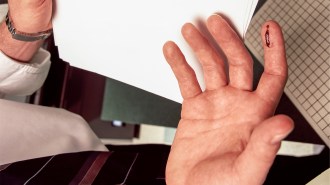 Physics
PhysicsPaper cut physics pinpoints the most hazardous types of paper
Dot matrix printer paper is the most treacherous, physicists report. Magazine paper comes in second.
-
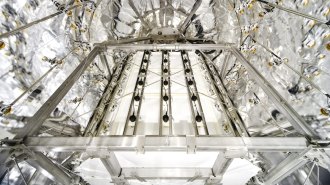 Particle Physics
Particle PhysicsDark matter experiments get a first peek at the ‘neutrino fog’
The hint of fog marks a new way to observe neutrinos, but points to the beginning of the end for this type of dark matter detection.
-
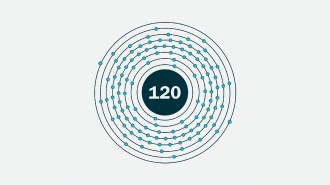 Chemistry
ChemistryA new element on the periodic table might be within reach
Scientists made the known element 116 with a beam of titanium atoms, a technique that could be used to make the undiscovered element 120.
-
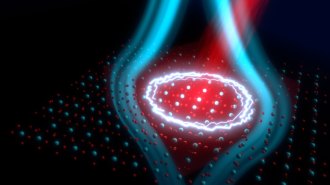 Physics
PhysicsCan light spark superconductivity? A new study reignites debate
Brief blasts of light might make some materials into fleeting superconductors. Magnetic measurements strengthen the case for this controversial claim.
-
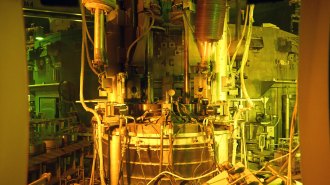 Physics
PhysicsAdvanced nuclear reactors need a different type of uranium. Here’s 4 things to know
The nuclear fuel of the future may be HALEU, high-assay low-enriched uranium. But questions about the material remain.
-
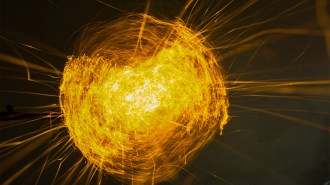 Physics
PhysicsA black hole made from pure light is impossible, thanks to quantum physics
A “kugelblitz” is a black hole made of concentrated electromagnetic energy. But it’s not possible to make one, according to new calculations.
-
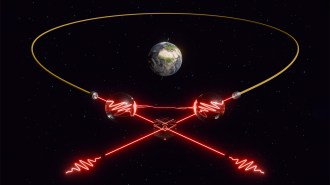 Quantum Physics
Quantum PhysicsPhysicists measured Earth’s rotation using quantum entanglement
The experiment is a step toward testing how quantum physics interfaces with gravity.
-
 Particle Physics
Particle PhysicsScientists propose a hunt for never-before-seen ‘tauonium’ atoms
Made of heavy relatives of the electron, the exotic atoms could be used to test the theory of quantum electrodynamics.
-
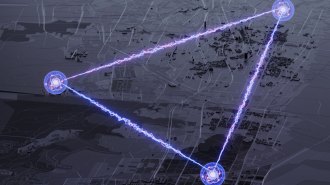 Quantum Physics
Quantum PhysicsTwo real-world tests of quantum memories bring a quantum internet closer to reality
Scientists successfully entangled quantum memories linked by telecommunications fibers across two different urban environments.
-
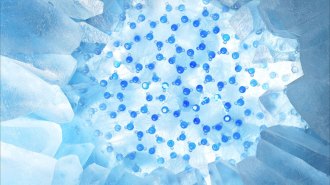 Physics
PhysicsHere’s how ice may get so slippery
Ice’s weirdly slick exterior might originate from the boundaries between two different types of ice that form on the surface of frozen water.
-
 Particle Physics
Particle PhysicsThe neutrino’s quantum fuzziness is beginning to come into focus
An experiment studying the neutrino’s “wave packet” sets a limit on the uncertainty of the subatomic particle’s position.
-
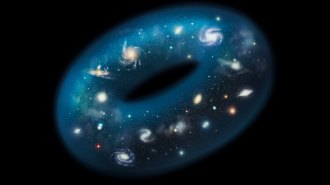 Cosmology
CosmologyThe universe may have a complex geometry — like a doughnut
Physicists haven’t yet ruled out the possibility that the universe has a complicated topology in which space loops back around on itself.